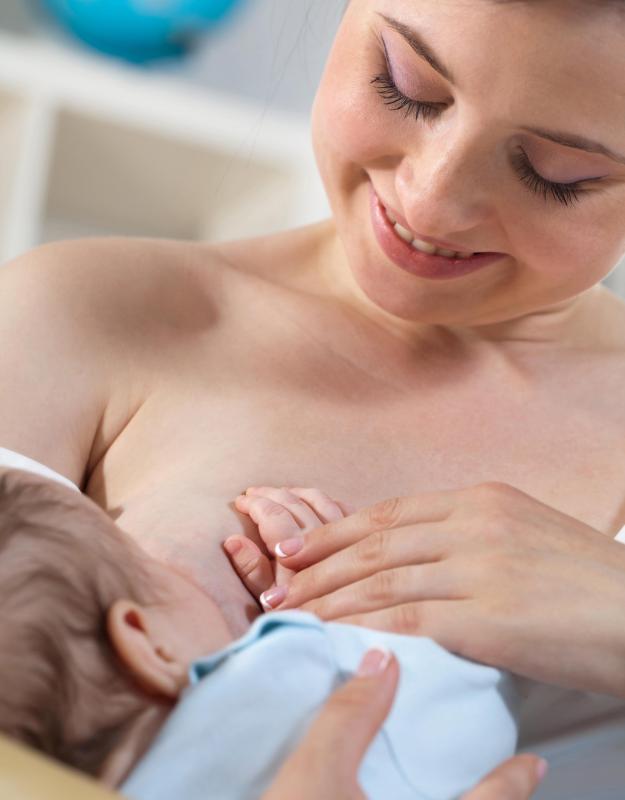At WiseGEEK, we're committed to delivering accurate, trustworthy information. Our expert-authored content is rigorously fact-checked and sourced from credible authorities. Discover how we uphold the highest standards in providing you with reliable knowledge.
What are the Common Causes of Breast Pain and Lumps?
During a woman’s life, the breasts will undergo many changes. Some of these changes may cause breast pain and lumps. Most such issues are not a cause for concern. In a few cases, however, these alterations may indicate a more serious condition: breast cancer.
The composition of a normal breast marks it as a prime area for seemingly abnormal textures and sensations. Since fatty tissue constitutes a large portion of the breasts, a thin woman’s muscles could possibly be felt through the breast, which may seem like lumps. Various glands and ducts — mostly to aid in milk production — also run through the breast. If these structures are active or growing, they may cause sore breasts, tenderness, pain, or lumps. Lipomas and adenoses are two common types of painful fatty tissue growth that may be found in women.

Hormonal changes can also facilitate breast pain and lumps. Thus, any abnormalities occurring during pregnancy, puberty, and menstruation are less likely to result from a serious condition. Young girls in particular will experience many breast changes during puberty, as hormonal alterations impact breast development. The monthly menstrual cycle is another time when hormones are extremely active.Breast pain often accompanies pre-menstruation in many women, especially younger women, and this type of pain is known as cyclic mastalgia.

Noncyclic mestalgia, on the other hand, refers to painful breasts that are not associated with a menstrual cycle. This type of pain is due to the formation of a cyst or other benign lump in the breast. The cyst may arise from infection, a chronic or inherited condition, or simple wearing. Women over the age of forty are those most likely to develop this disorder. Another condition that can form cysts is fibrocystic breast disease, which is identifiable by movable, rubber-like cysts that occur in the top or side areas of the breasts.

Painful breast infections may result from bacterial or viral sickness. A type of infection called mastitis can take hold during breast-feeding. Once an infection has set in, symptoms aside from breast pain and lumps can include breast discoloration, breast swelling, and fever. A severe infection can cause a pus-filled cyst, or an abscess.
Although it is the least likely cause of breast pain and lumps, breast cancer presents a serious threat to women of all ages and backgrounds. If a lump is detected during a self-examination or a medical examination, further tests should be conducted. Women who have a family history of breast cancer among close relatives, or women who experienced early or delayed onset of menstruation or menopause may be at increased risk and should have routine mammograms beginning around age 40. Symptoms of breast cancer are variable: breast lumps, depressed skin pockets, and pushed-in nipples with a bloody discharge can result, but actual pain may or may not occur.

For breast pain and lumps, perhaps the best treatment is vigilance. Caffeine and fat reduction can help alleviate benign symptoms in some women. Exercise and vitamin intake may also be of some assistance. Treatments for malignancy will typically require chemotherapy and, in some cases, surgical removal of affected tissue or the entire breast. Women can benefit from becoming familiar with their individual breast structures and conducting monthly self-exams to discover and note any sudden breast changes.
The first step in a self-examination is to examine exposed breasts in a mirror, shoulders straightened and arms on hips. Any changes should be noted, such as discoloration, discharge, or dimpled or raised skin. Then, the individual should raise the non-examining hand or place it behind the head and thoroughly feel each breast and nipple in a circular or up-and-down motion to check for lumps or indentations in the nipples. This step should also be repeated while lying down, and dampened skin may aid in detection for either position. Any suspected abnormalities, regardless of their location on the breast, should be referred to a certified medical professional.
AS FEATURED ON:
AS FEATURED ON:














Discussion Comments
When my daughter was born, she had trouble latching on and I got awful mastitis in one breast. It was terrible. I was so sore! Fortunately, I was still on maternity leave, so I didn't have to try to wear a bra over it. It went away in about a week. I had to use a breast pump. Lord, what a mess!
I alternated using ice packs and heat to reduce the swelling. I so wanted to take some ibuprofen, but I couldn't. If I have another child, I may breast feed for a while, but if I get mastitis again, that's it. I'm weaning the baby and taking some Advil!
Fibrocystic disease runs in my family and I have kind of lumpy breasts because of it. When I was in my early 20s, I had a lump come up on the top of one breast. My mom had had breast cancer a couple of years before, so it terrified me.
She called a friend who is a nurse and the lady told me to cut out all caffeine for a week and see if there was a change. I did, and the pea-sized lump disappeared. I called her and told her and she said that was what she expected, that I probably had been consuming too much caffeine and that's what happened.
I always examine myself, and I know if I've been getting too much caffeine because that lump will come up. It's always in the same place.
Post your comments